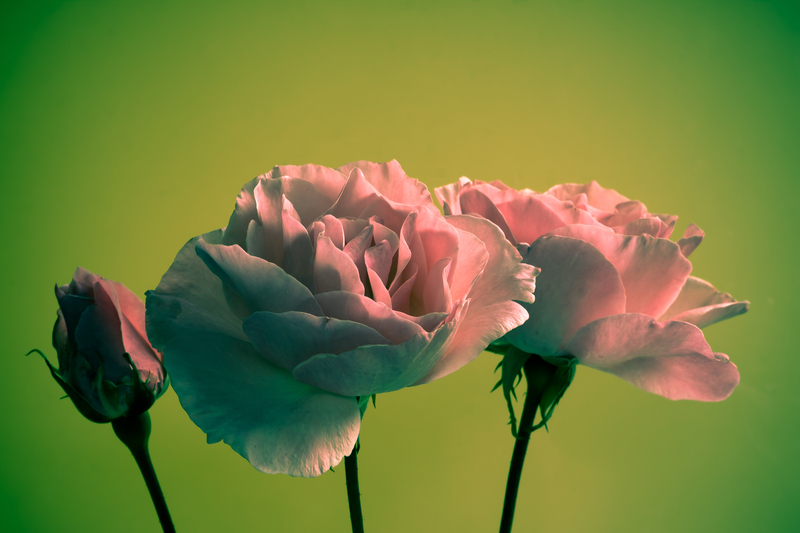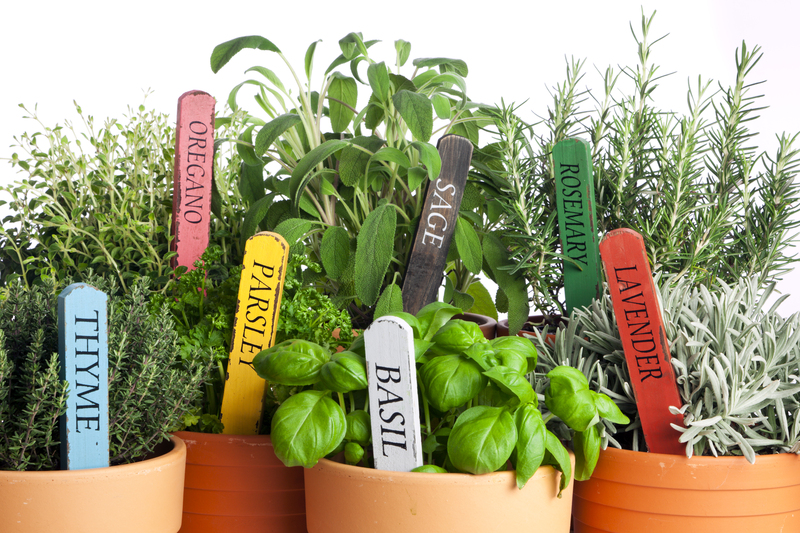Balancing Pet Play and Plant Growth
Posted on 02/07/2025
Balancing Pet Play and Plant Growth: The Ultimate Guide
Do you love having both playful pets and thriving indoor plants at home? Many people dream of a harmonious space where pets and plants peacefully coexist. But sometimes, our furry friends' enthusiasm for play can put our precious greenery at risk. Balancing pet play and plant growth requires thoughtful planning, smart choices, and a bit of creativity.
Why It's Important to Balance Pets and Plants at Home
Our pets bring joy, warmth, and companionship, while indoor and outdoor plants purify the air and elevate the vibe of any space. Still, the interaction between pets and plants can sometimes be less than ideal. Cats may chew succulents, dogs dig in planters, and even a curious rabbit can wreak havoc on a budding monstera.
Balancing pet play with healthy plant growth means setting boundaries and fostering harmony. The benefits are undeniable:
- Safer environment for both pets and plants
- Healthier, longer-living plants
- Reduced stress for pet owners
- Peaceful spaces that meet everyone's needs

Understanding Common Pet Behaviors That Affect Plant Growth
Every pet is unique, but there are typical behaviors that pet owners should be aware of to balance plant growth with pet play time:
- Chewing: Many dogs and cats chew houseplants out of curiosity or boredom.
- Digging: Some dogs and many cats may dig in potted plants.
- Climbing: Cats especially love to climb, sometimes using plants for leverage.
- Kicking earth: Rabbits and dogs might scatter soil during play.
- Knocking over pots: Excited or playful animals may bump or knock planters, leading to plant damage or breakage.
Awareness of these behaviors is the first step in protecting plants from pets.
The Impact of Pets on Different Types of Plants
Some plants are more pet-tolerant than others. Delicate plants, such as ferns, can be quickly destroyed when a cat decides to nap in their fronds. Cacti or succulents present fewer temptations, but their spines can injure curious cats or dogs. Hanging and trailing plants, while generally out of reach, can sometimes look like irresistible toys.
It's also important to consider the toxicity of certain plants for animals. Choose wisely, as some houseplants can be toxic to pets if ingested.
Pet-Friendly Plant Choices
Choose plants that are safe for pets! Some popular options include:
- Spider Plant (Chlorophytum comosum): Easy to grow, non-toxic, and hardy.
- Bamboo Palm (Chamaedorea seifrizii): Pet-friendly and known for air-purifying qualities.
- Boston Fern (Nephrolepis exaltata): Lush, beautiful, and safe for cats and dogs.
- Areca Palm (Dypsis lutescens): Adds tropical flair without harming pets.
- Parlor Palm (Chamaedorea elegans): Small and perfect for tabletops or shelves.
For cat households, consider growing cat grass or catnip -- plants specifically grown for feline friends to nibble.
Plants to Avoid Around Pets
Be aware that certain plants can be dangerous for pets, possibly causing vomiting, drooling, or worse. Avoid these toxic houseplants:
- Lilies -- extremely toxic to cats.
- Sago palm
- Aloe vera
- Philodendron
- Pothos
- Dieffenbachia
- Peace Lily
If you're unsure, always consult the ASPCA's list of toxic and non-toxic plants.
Strategies for Protecting Plants While Encouraging Pet Play
1. Physical Barriers and Plant Placement
One of the most effective ways to create a harmonious environment is by controlling access. Try these methods:
- Use shelves and plant stands: Elevate plants out of pets' reach.
- Install hanging planters: Perfect for trailing or vining species.
- Secure large pots: Use heavy planters or pot stabilizers to prevent tipping.
- Enclose plants: Glass terrariums protect small or delicate specimens.
2. Designate Pet Play Zones
Pets need their own space. Carve out a pet play zone away from delicate plants. Include the following:
- Cat trees or condos to satisfy climbing urges.
- Scratching posts as alternatives to digging in soil.
- Toy baskets filled with favorite distractions.
- Interactive toys and treat puzzles to keep animals busy and away from your indoor garden.
3. Repellents and Deterrents
Some safe, natural repellents can discourage pets from munching on your greenery:
- Use citrus peels in pots--most cats and dogs dislike the smell.
- Spray plants with a diluted vinegar solution (always check plant tolerance first).
- Pebbles or decorative rocks on soil deter diggers and add style.
4. Training and Positive Reinforcement
Train your pets to leave plants alone. Reward them for positive behavior using treats and praise. Redirect unwanted behavior--like digging or chewing--towards toys and appropriate outlets.
Enriching Pet Play Without Sacrificing Plant Health
Environmental Enrichment for Pets
An enriched environment ensures your animal companions are content and less likely to destroy houseplants. Good enrichment strategies include:
- Daily exercise: Walks, play sessions, and agility games tire out energetic dogs.
- Climbing shelves: Cat-specific shelving lets felines leap and climb without harming plants.
- Puzzle feeders: Encourage problem-solving and entertainment.
- Safe chew toys: Satisfy the urge to nibble with healthy options, not leaves.
By fulfilling your pet's needs, you lower the risk of plant destruction.
Choosing the Right Plants for Shared Spaces
If you have limited space and pets that roam everywhere, prioritize hardy, pet-safe species, such as:
- Cast iron plant (Aspidistra elatior): Tolerant of abuse and low-light, and non-toxic.
- Calathea varieties: Highly decorative and pet-friendly.
- Air plants (Tillandsia): Require no soil and can be mounted high, out of reach.
Creative Plant Display Ideas for Pet Owners
Show off your greenery while reducing the risk of pet damage with these creative methods:
- Wall-mounted planters: Utilize vertical space and minimize temptation.
- Macrame hangers: Beautiful and practical for trailing or compact plants.
- Window shelves: Offer sun exposure while keeping plants away from playful paws.
- Closed terrariums: House humidity-loving plants and protect them from curious animals.
Outdoor Gardens: Keeping Plants Safe from Pets
Securing Your Garden
For those with outdoor pets and gardens, the challenge multiplies! Dogs might dig up flower beds, while cats could use garden soil as their litter box. Balancing pet activity with thriving outdoor plants demands attention:
- Garden fencing: Short, decorative fences around beds deter most dogs and some cats.
- Raised beds: Elevate your flowers and veggies out of reach.
- Mulch and ground coverings: These can discourage digging.
- Dedicated digging areas: Some pets love to dig; a sandy spot away from your prized plants can provide a healthy outlet.
Training Your Pet to Respect the Garden
Be patient and consistent. Teach pets where they can and cannot go. Always use positive reinforcement and gentle redirection. Routine and boundaries are key!
Preventing and Repairing Plant Damage
Monitor for Signs of Stress
Regularly inspect your plants for:
- Chewed leaves or stems
- Root exposure from digging
- Displaced soil
- Wilting or broken branches
Early intervention means a better chance of recovery.
How to Revive Damaged Plants
If you find damage, act quickly:
- Prune away chewed or broken branches.
- Repot if roots are exposed or soil is compacted.
- Provide extra water and light as needed for recovery.
- Use plant supports for stability after accidents.

Frequently Asked Questions: Balancing Pet Play and Plant Growth
- How can I stop my cat from eating houseplants?
Offer safe plants like cat grass or catnip, elevate plants out of reach, and use pet-safe deterrents. - What are the best pet-proof plants?
Spider plant, Boston fern, and bamboo palm are popular, resilient, and non-toxic choices for homes with animals. - How do I keep my dog from digging in my garden?
Try garden fences, raised beds, and designate a "dig zone" away from your flowers and vegetables.
Final Thoughts on Creating a Pet-Plant Paradise
With the right plants, smart placement, and a focus on pet enrichment, any home can successfully balance pets and plant growth. Foster a space where both your houseplants and beloved animals can flourish--without sacrificing your sanity or style! Remember: planning, training, and creativity are vital for a peaceful, green, and playful home.
Key Takeaways for Pet Owners and Plant Lovers
- Choose non-toxic, hardy plants.
- Elevate or shield delicate greenery.
- Create designated play and digging areas for pets.
- Use positive reinforcement to train pets away from plants.
- Monitor and repair plant damage promptly.
Ready to create the perfect balance of pet play and thriving plant growth? Start today, and soon your home will be a peaceful, pet- and plant-filled haven!

